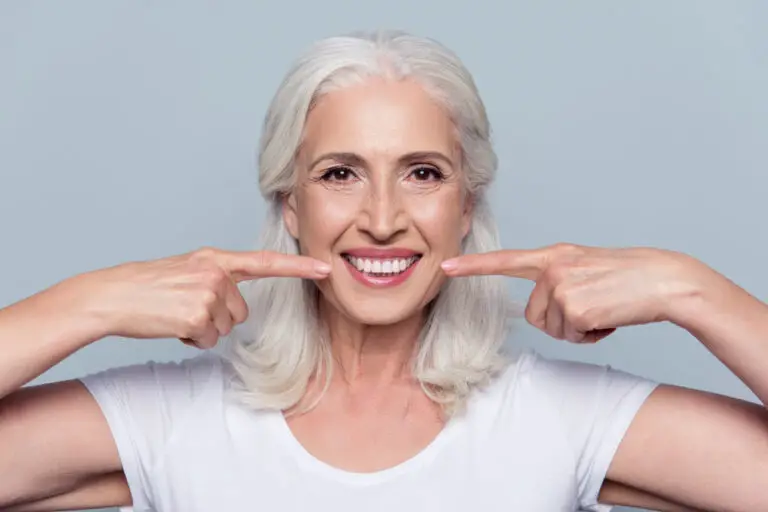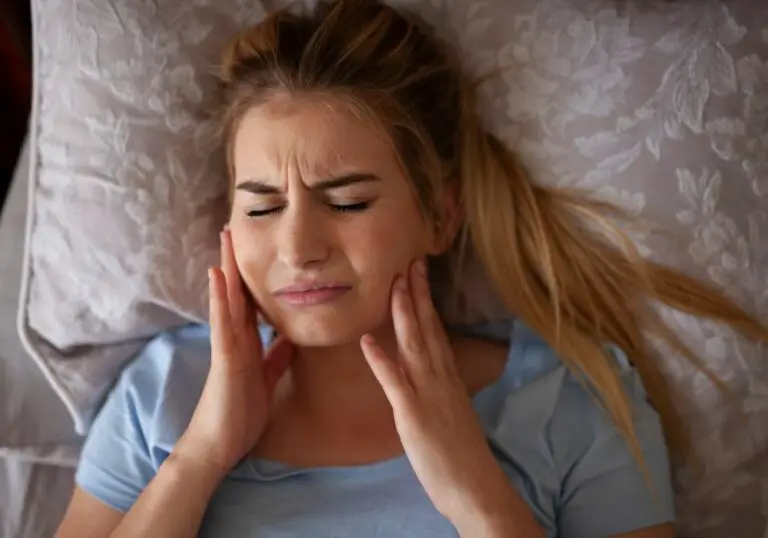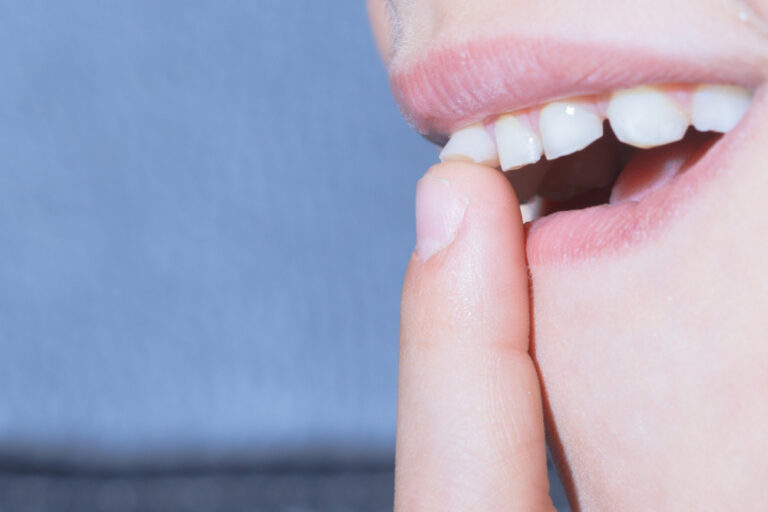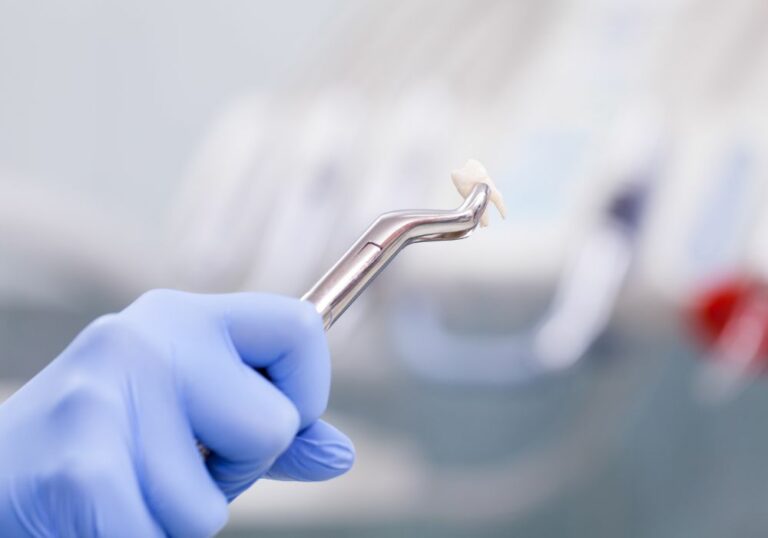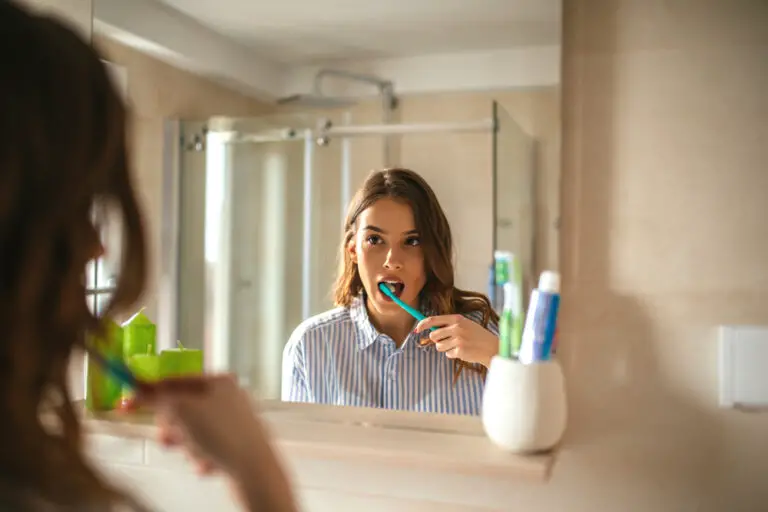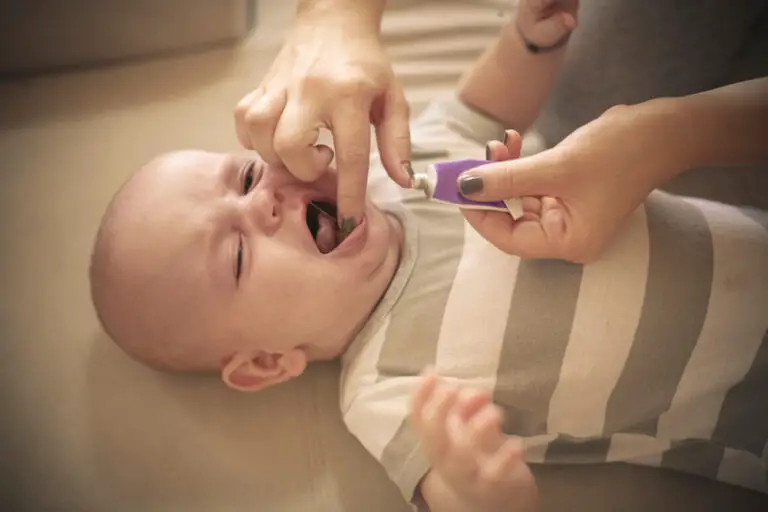Have you noticed brown spots or stains on your pearly whites? You’re not alone. Discolored teeth are an extremely common problem that affects millions of people. While a little yellowing as you age is normal, noticeable brown stains can really detract from your smile.
But where do these pesky brown stains come from? And what’s the best way to banish them for good? Let’s take a comprehensive look at the causes, treatments, and prevention tips for brown tooth discoloration.
Common Causes of Brown Tooth Stains
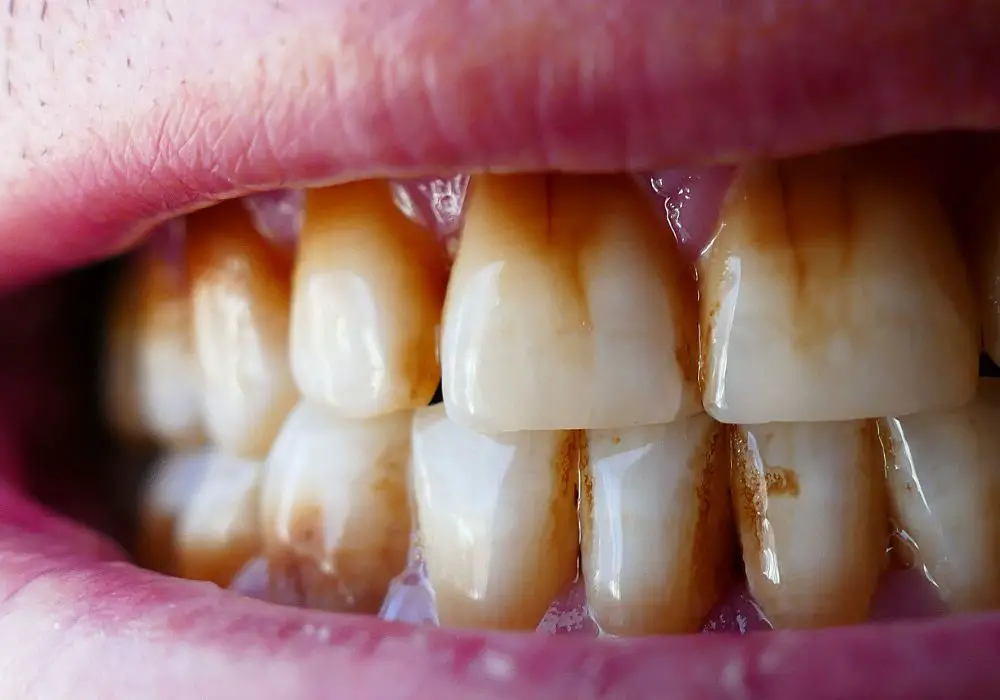
Brown stains on your teeth can stem from a number of sources. Here are some of the most prevalent culprits:
Foods and Beverages
The foods and drinks you put in your mouth on a daily basis can take a major toll on your tooth color. Some of the most notorious tooth-staining offenders include:
- Coffee and tea – Popular as caffeine jolts, these seemingly innocent beverages can lead to deep brown stains over time. The chromogens in coffee and tannins in tea latch onto enamel and discolor teeth.
- Wine and soda – Red wine is infamous for staining teeth due to its intense, dark pigments. Colas and other sodas can also cause stains due to their acidity levels and added food dye.
- Sauces and condiments – Soy sauce, curry, and other heavily pigmented sauces contain staining substances that attach to teeth with repeated consumption.
- Berries – Who knew healthy berries could be a culprit? The juices of blueberries, blackberries, raspberries, and others contain teeth-staining anthocyanins.
- Tomatoes – From spaghetti sauce to salsa, ingredients like carotene make tomato-based products a staining hazard.
- Candy – Hard candies like lollipops let sugary substances linger on your teeth. Over time, bacteria feed on the sugar and form plaque that stains enamel.
Tobacco Use
Whether you smoke cigarettes or cigars, chew tobacco, or use nicotine patches or gum, the nicotine in tobacco products bonds strongly to tooth enamel. The tar in tobacco is also highly staining. The longer and more frequently you use tobacco, the more pronounced stains become. Smokeless tobacco is particularly associated with brown stains.
Poor Oral Hygiene
When you don’t brush and floss properly, plaque – a sticky film of bacteria and food debris – builds up on your teeth. Over time, this substance hardens into calculus or tartar that traps stains from food and drinks. Inadequate oral hygiene allows stains to set in and discolor teeth.
Genetics
The natural color and structure of your tooth enamel plays a role too. Some people simply have thinner enamel or larger microscopic tubules in teeth that make them appear more yellow or brown. Pregnancy can also affect tooth color, with some women experiencing browner teeth due to increased estrogen levels.
Fluorosis
Too much fluoride intake while teeth are still developing can lead to a condition called fluorosis. This causes chalky white specks and streaks to form on tooth enamel, which can make teeth look darker and mottled overall. Fluorosis is most common in areas with heavily fluoridated water.
Medications
Certain prescription drugs are associated with brown tooth stains as a side effect. Common culprits include antibiotics like doxycycline, blood pressure medications containing iron, and antihistamines like Benadryl. Always check medication labels for tooth discoloration warnings.
Liver Disease and Other Medical Conditions
Serious medical conditions affecting your liver, kidneys, or bones can also manifest as brown stains on teeth. For example, liver disease causes increased bilirubin levels that can yellow teeth. Make sure to inform your dentist about any underlying medical issues.
Dental Work
Discoloration around dental work like fillings, crowns, and bridges may indicate underlying problems. Metal-based materials can stain surrounding enamel. Fillings with decay underneath or crowns with leakage also show brownish tingeing. Visit your dentist promptly if you notice staining around dental restorations.
When to See Your Dentist
Not all tooth stains require professional dental treatment. But it’s smart to make an appointment if you notice:
- Sudden appearance of brown stains for no apparent reason
- Rapid worsening or darkening of stains
- Spreading brown discoloration
- Stains accompanied by pain, sensitivity, or other symptoms
- No improvement despite good oral hygiene habits
The dentist can pinpoint the exact cause of staining through an oral exam and recommend suitable whitening treatments. Leaving heavy stains untreated allows them to intensify and potentially lead to dental decay or gum disease down the road.
Stain Removal and Teeth Whitening Options
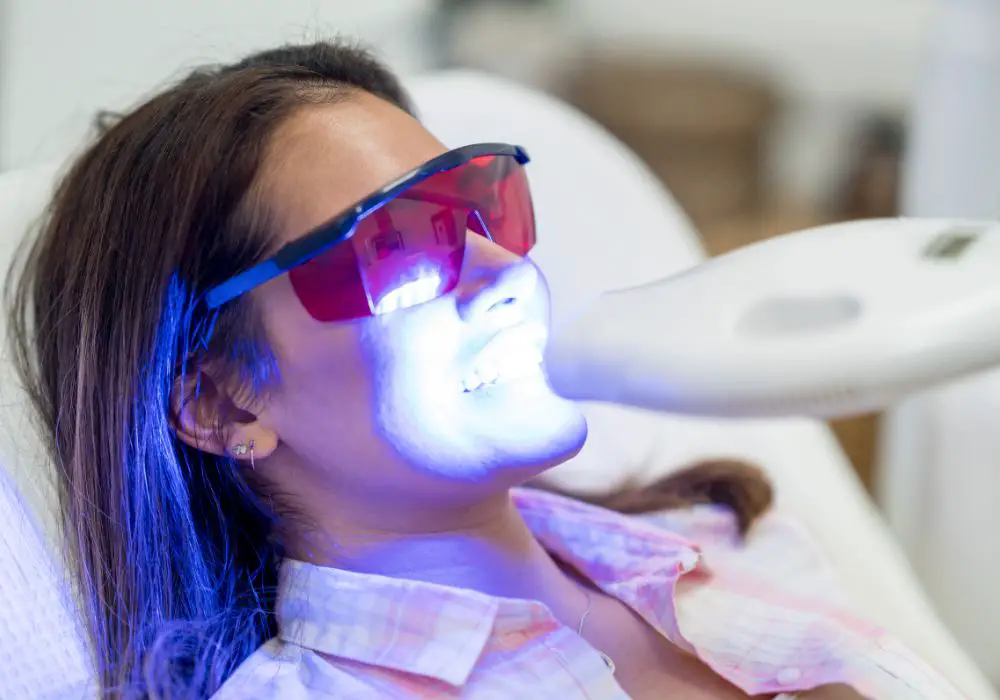
If you want to blast away those bothersome brown stains, what methods are most effective? Here are some smart ways to get your teeth looking their whitest:
Toothpastes and Over-the-Counter Products
As a first line of defense, consider using:
- Whitening toothpastes – Contain polishing agents and bleaching ingredients like hydrogen peroxide to gently lighten surface stains each time you brush.
- Whitening strips – Thin strips coated with peroxide that stick to teeth to lift stains and bleach discoloration. Use for 30 minutes 1-2 times per day.
- Whitening gels – Often sold in kits with custom mouth trays. The bleaching gel is applied to the tray and worn against teeth daily.
- Whitening rinses – Swish liquid in your mouth for 60 seconds daily to bleach stains with ingredients like hydrogen peroxide.
Be cautious using activated charcoal and baking soda, which may damage enamel with overuse. And know results take weeks with over-the-counter products.
Professional Whitening
For the most dramatic brightening for stubborn, set-in stains, visit your dentist for professional whitening procedures like:
- In-office bleaching – Whitening gel with a high peroxide concentration is applied and activated by light or laser. Takes 1-2 visits for an average of 8 shades whiter.
- Custom tray whitening – Your dentist makes trays to hold concentrated bleaching gel against your teeth for 1-2 weeks at home. Faster than over-the-counter methods.
- Air polishing – Baking soda sprayed on teeth while a vacuum device sucks away stain debris. Also removes plaque and tartar buildup.
- Microabrasion – An abrasive tip is used to buff staining off the outermost layer of enamel.
Professional options provide the safest, most effective way to eliminate years of accumulated brown stains. But periodic touch-ups will be needed, as results last about 1-2 years.
Other Restorative Treatments
For resistant stains affecting just a few teeth, your dentist may recommend:
- Dental bonding – Tooth-colored material shaped over teeth to mask discoloration. Less invasive than crowns or veneers.
- Dental veneers or crowns – Thin shells or caps placed over teeth to cover staining and create a whiter appearance.
Which Method is Best?
The best teeth whitening method for you depends on:
- Extent of staining – Dramatic brown stains often require stronger professional treatments.
- Desired results – In-office or custom tray whitening produces more intense whitening than over-the-counter options.
- Budget – Professional treatments are more costly than home products.
- Maintenance – Periodic touch-ups needed to sustain whitening results.
Discuss all of your options with your dentist to decide which type of whitening is right for your needs and lifestyle.
Steps to Prevent Future Staining
Once you’ve banished those unsightly brown stains, follow these tips to stop new discoloration in its tracks:
- Maintain meticulous oral hygiene – Brush properly twice a day and floss once daily.
- Limit intake of staining foods and beverages or use a straw when drinking them.
- Rinse mouth thoroughly with water after consuming staining substances.
- Drink plenty of water each day to stimulate saliva flow that washes away stains.
- Chew gum with Xylitol, which prevents bacteria growth and plaque buildup.
- Use whitening toothpaste and over-the-counter touch-up products periodically.
- Have professional whitening treatments yearly or as directed by your dentist.
- Quit smoking and chewing tobacco to avoid severe brown staining.
- Get regular dental cleanings and exams every 6 months.
While drinks, foods and aging will always produce some natural tooth discoloration, diligent oral care and stain prevention can keep your smile glowing.
FAQs About Brown Stained Teeth
Here are answers to some frequently asked questions about dealing with brown tooth stains:
Why do my teeth look yellow even though I brush twice a day?
Daily brushing alone often isn’t enough to combat gradual yellowing and prevent stains from substances like coffee, tea, and food. Try adding flossing, whitening toothpaste, and an antibacterial mouthwash to your routine for whiter teeth between professional cleanings. Over-the-counter or dentist whitening can also help brighten teeth.
What’s the difference between brown and yellow stains?
Yellow stains affect the entire tooth surface and are linked to aging or consumption of staining foods/drinks over time. Brown stains appear as spots or streaks and stem from heavier pigmented foods, tobacco use, medication side effects, or underlying health issues.
Is it possible to get rid of brown stains without whitening treatments?
Unfortunately scrubbing alone won’t remove set-in brown stains. Non-bleaching options like air polishing and microabrasion at the dentist only work on surface stains. To penetrate deep stains, chemical bleaching of some kind is typically required.
Should I get my teeth cleaned professionally before or after whitening?
It’s ideal to get a dental cleaning to remove plaque and surface stains first. Then follow up with whitening treatments a week or two later when teeth are fresh and clear. This allows the bleaching agents to better penetrate enamel for maximum brightening.
How long do professional whitening treatments last?
On average, professional in-office or tray whitening results can last 1-3 years. But teeth will gradually darken again over time without periodic touch-ups or maintenance. Avoiding heavily staining foods and stick to good oral hygiene to prolong your whitened smile.
The Takeaway on Brown Stained Teeth
Don’t let unsightly brown stains dull your smile! Understanding where these stains come from is the first step toward banishing them for good. While home whitening methods help, visiting a dentist for professional treatments is the surest way to erase stubborn, set-in stains safely and effectively. With the right mix of stain removal, prevention, and maintenance, you can keep your teeth looking their absolute brightest and maintain a glowing smile for years to come.

